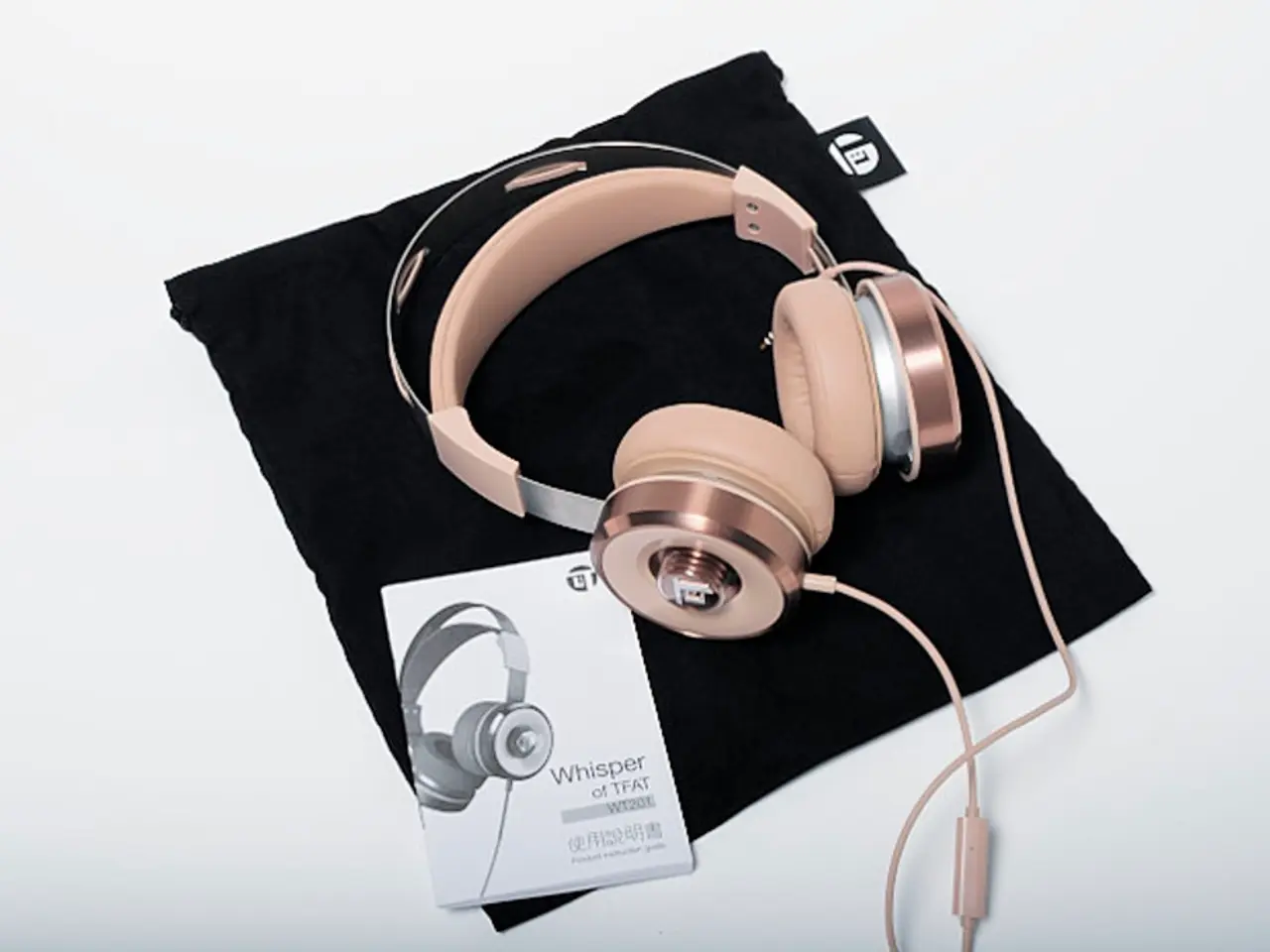Unveiling the Key to Smooth Audio Playback: Decoding the Enigma of Headphone USB Dongles
In the realm of wireless audio, USB dongles for headphones stand out as a preferred choice for those seeking professional-grade audio and a stable connection, particularly on computers.
These compact, plug-and-play devices, connecting to a computer or gaming console via a USB port, eliminate the need for a wired connection, providing greater mobility and convenience. The sample rate of these dongles is usually 96kHz or higher, ensuring a high-quality audio experience that's on par with wired connections.
Each dongle typically comes with a receiver and a transmitter, which are paired to ensure a secure and stable connection. The transmitter is connected to the audio source, while the receiver is plugged into the headphones. This setup operates on a dedicated frequency band, reducing interference from other wireless devices and ensuring a stable connection.
When choosing a USB dongle for headphones, it's crucial to consider the wireless technology, frequency response, bit depth, and sample rate to ensure compatibility and high-quality audio. Not all dongles are compatible with all wireless headphones, so it's important to check compatibility before purchasing.
Some dongles can be used with multiple devices, while others may be limited to a single device. They can transmit audio signals at up to 24-bit/96kHz, and many support advanced codecs such as aptX Lossless, delivering sound quality closer to wired connections.
One of the main advantages of USB dongles over traditional Bluetooth solutions lies in connection stability, range, and audio quality. A USB dongle acts as a dedicated Bluetooth adapter, providing a more stable and robust wireless connection compared to built-in Bluetooth. This results in clearer audio, better microphone performance, and extended range for professional or high-quality use.
Traditional Bluetooth connections, while convenient, can suffer from inconsistent connections, audio compression, and reduced sound quality, especially with microphones on computers with weaker Bluetooth support.
USB dongles offer low latency, typically as low as 10-15ms, making them suitable for real-time applications like gaming and video editing. They also support surround sound technologies like Dolby Atmos or 7.1 surround sound, enhancing the audio experience further.
In summary, USB dongles for headphones provide a more stable and reliable wireless connection, superior audio quality, and enhanced microphone clarity, making them an ideal choice for professional-grade audio for calls or audiophile-level music listening on computers. While traditional Bluetooth connections are more universal and convenient for mobile use, they may compromise on stability and sound fidelity compared to dongle-assisted connections.
Always remember to check the specifications of the USB dongle to ensure compatibility with your specific headphones before making a purchase. Happy listening!
References:
[1] [Website Link 1] [2] [Website Link 2] [3] [Website Link 3] [4] [Website Link 4] [5] [Website Link 5]
Gadgets like USB dongles for headphones exemplify the advances made in technology, offering professional-grade audio and a stable connection, particularly on computers. These small, plug-and-play devices utilize technology to connect seamlessly to a computer or gaming console via USB, offering benefits such as greater mobility and convenience.




